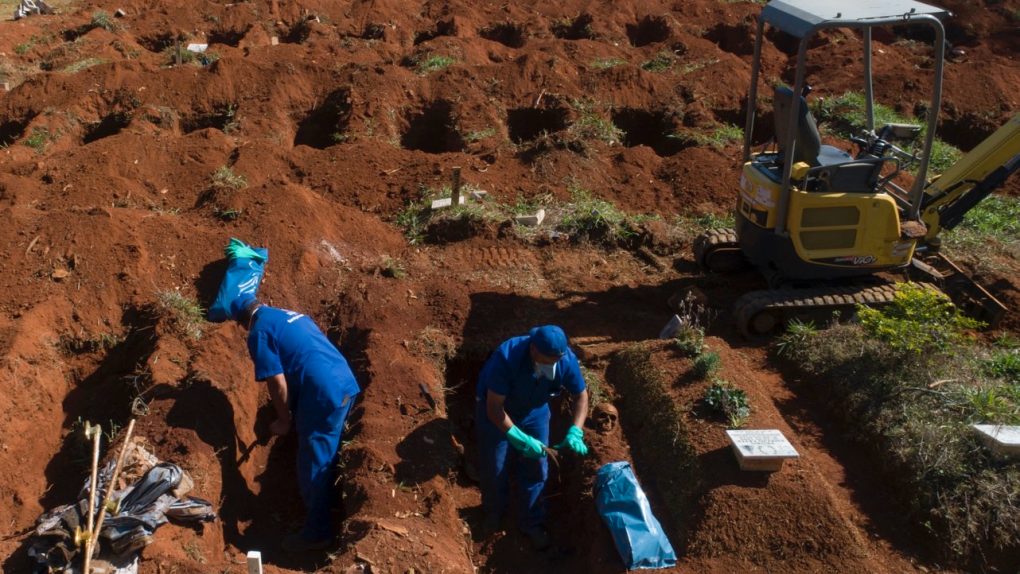- As the number of coronavirus deaths mounts in the US and other countries, researchers are trying to figure out the true fatality rate of COVID-19.
- Using available data from various studies that have attempted to offer accurate estimates, a study says the real mortality rate may be at 0.68% on average. That’s 6.8 deaths for every 1,000 infections.
- The actual mortality rate takes into account the COVID-19 cases that have not been diagnosed by a PCR test and is lower than the mortality rate calculated against the number of confirmed tests.
- Even at 0.68%, the COVID-19 mortality rate would be nearly seven times higher than the flu.
The novel coronavirus seemed like it might be a variation of the flu in the early days of the Wuhan epidemic. The more the virus spread and the more we learned about the pathogen, it became more apparent that COVID-19 isn’t anything like the flu. Not only does it spread a lot easier and faster, but it can cause a variety of serious complications that don’t appear in influenza cases. The new virus also kills a lot more people than the regular flu, even though some politicians claimed the two infectious diseases had similar mortality rates.
Seven months later, the coronavirus has killed nearly 616,000 people out of almost 15 million infections. That’s a fatality rate of 4.13%, according to the Coronavirus App website that’s been tracking COVID-19 for months. However, that number doesn’t tell the whole story. It’s unlikely that every COVID-19 death was reported as such, so the real death toll is likely higher. More importantly, the total number of cases registered worldwide isn’t truly the grand total. There have only been 15 million confirmed infectons, but as many as 10 times more people may be infected. That includes the asymptomatics and people who never get tested for COVID-19 but end up surviving. What that means is the fatality rate is actually much lower. Researchers think they know exactly how many people COVID-19 kills, statistically speaking, and the figure is still much higher than the flu.
Without being able to measure the actual number of infected people in a community, and account for all the deaths caused by COVID-19, researchers have come up with other ways to measure the fatality rate, The Wall Street Journal reports. They analyzed data from various sources that tracked the pandemic, including outbreaks on cruise ships, surveys of people in hot spots, and other studies. Dozens of other studies have attempted to calculate the infection rate of COVID-19.
COVID-19 might kill anywhere from 0.3% to 1.5% of the infected, some of that research says. Other studies claim that the fatality rate is between 0.5% and 1.0%, which translates to five to 10 deaths for every 1,000 infections.
At this rate, the coronavirus is much deadlier than the flu, which kills 0.1% of infected people. And while other infectious threats like Ebola are more dangerous than COVID-19, the novel coronavirus is more contagious and easier to spread, which means COVID-19 ends up killing far more people than Ebola.
Researchers looked at 26 studies that estimated the infection-fatality rate in different parts of the globe and concluded that the true fatality rate would range between 0.53% and 0.82%, with an aggregate estimate of around 0.68%. The study was published in medRxiv and has not been peer-reviewed.
The CDC is using the report to estimate the infection-fatality rate and plan various scenarios. The agency has a fatality rate guidance of 0.65% as of July 10, which is higher than it was previously.
A fatality rate of 0.6% would make COVID-19 six times deadlier than influenza, but more data is needed to verify the findings. As WSJ points out, there are notable differences between these estimates. The flu figure does not take asymptomatic cases into account. If it did, the flu fatality rate would be even lower than 0.1%.
While we may never be able to have an entirely accurate fatality rate for COVID-19, it’s likely that it will not go as low as the flu anytime soon. Also, it’s important to consider that surviving the illness doesn’t guarantee a speedy recovery. Some patients suffer from COVID-19 symptoms and chronic side effects for months after the initial infection. With the virus surging in several places, it’s more important than ever to limit contact with other people, wear a mask, and wash your hands.








